|
Ticking/Roan/Belton
Ticking and Roaning can
be impossible to tell apart. There is debate if there are indeed separate
genes that produce the ticking or the roaning. We will speak in the manner
of ticking being the same as roan. In either case, it is expressed with
great variation. A ticked dog can have one or two spots of the base color
pushing up through the coat or be literally covered with it. Sometimes
it is so profuse that the tick spots start to blend together with each
other forming larger areas. At birth the pups do not show the ticking pattern
and slowly develop it as they mature.
Different breeds call
ticking different names also. It has commonly been called Belton in some
breeds and Roan in others. It can appear on a dog of any color provided
there is some white color on the dog for the gene to work. Ticking only
comes up through a white coat showing the base color of the dog. Below
are a few examples in different colors to show that the effects can be
very different.
The Dalmatian is a breed
where ticking has been locked in so tight that it actually has taken on
an appearance of its own. By breeding like to like over many generations
the gene becomes breed specific.
Ticking. It has the appearance of a salt and pepper
type nature. Sometimes seen as more pepper than salt if you will. Scattered
hairs of a different color appear in areas about the dog, but are not usually
visible at birth. Roaning and ticking develop as the puppy gets older.
It is usually seen predominately on the white areas of the dogs coat but
is also seen within the tan areas of tan points, and sometimes it will
show threw on a black coat.
This Series exhibits a great degree
of variability in its expression. It is said to be responsible for the
“silvering” effect seen in some dogs. The dog's coat can be virtually covered
with small spots and hairs of color or very little with one or two spots
developing.
Belton
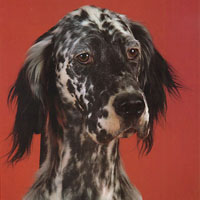 |
These are both variations
of the ticking pattern but
called a different name from
"Ticking"
|
Roaning
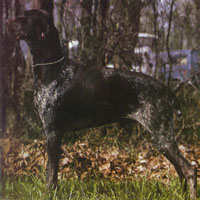 |
Ticking
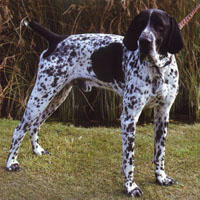 |
Here we see ticking in two
different colors. The dogs
also carry the gene for "piebald"
or patches of color making the
coat even more interesting by
breaking the color up with white patches.
|
Ticking
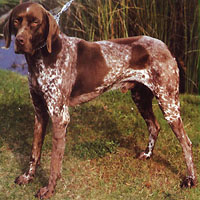 |
Ticking
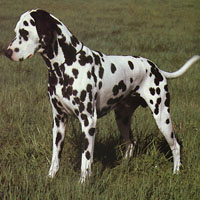 |
The Dalmatian genes have been locked in so tight
that each dog that is
produced is generally uniform in color and has
fairly regular spots as
opposed the irregular patches or individual hairs
pushing up. |
|



